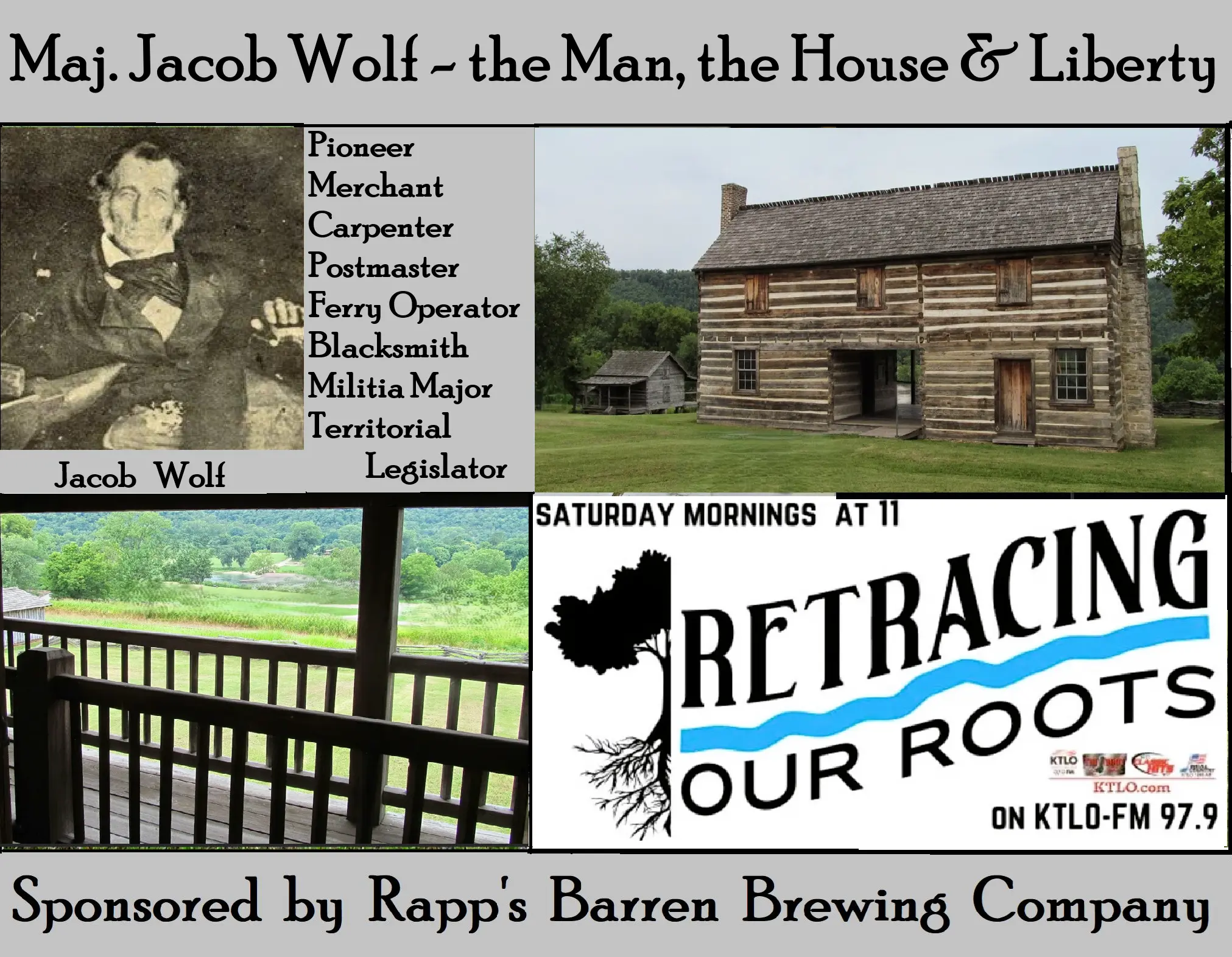Welcome to Retracing Our Roots, where Heather Loftis, Sammy Raycraft, and Vincent Anderson rediscover Jacob Wolf, a pioneer who shaped the Ozarks. They explore his legacy and the region's early history, offering insights into the lives of its first settlers.
First, we received a lot of feedback and a couple of questions from last week’s show, especially on the Carolina Paroquet. Here in Arkansas, there are even bluffs along the Black River between Newport and Batesville called 𝙇𝙞𝙩𝙩𝙡𝙚 𝙋𝙖𝙧𝙤𝙦𝙪𝙚𝙩 𝘽𝙡𝙪𝙛𝙛 and 𝙋𝙖𝙧𝙤𝙦𝙪𝙚𝙩 𝘽𝙡𝙪𝙛𝙛, named for the flocks that once nested there. The name outlived the bird.
Early settlers called them “fool birds,” not for their intelligence, but for their loyalty. If one was wounded, the whole flock returned to help, giving farmers a clear shot. Also, for those wondering about the unusual spelling of “Paroquet,” it was once a common Americanized way to spell parakeet, reflecting an older, phonetic style in English
Jacob Wolf
Jacob Wolf, born on May 12, 1786, in Rowan County, North Carolina, was one of eleven children of Michael and Cathrina Wolf, of Pennsylvania German descent. The family moved to Hopkins County, Kentucky, before 1800, where Wolf married Mildred Meredith on March 9, 1809. After her death around 1820, Wolf migrated to the Arkansas frontier to join his family, who had settled along the Big North Fork of the White River. On November 15, 1824, he purchased seventy-six acres of government land near the river's mouth in Liberty, Arkansas.
The Jacob Wolf House is perched on a hillside overlooking the confluence of the White and North Fork Rivers. Today, we know Liberty as the town as Norfork, Arkansas, in Baxter County. Built in 1829, the Jacob Wolf House is the oldest, two-story, dogtrot, public building, not only in Arkansas, but it’s the oldest west of the Mississippi River.
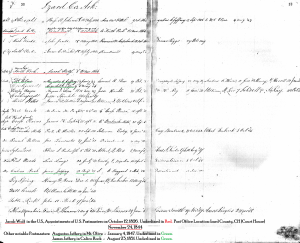
The house was the first permanent courthouse for Izard County in Arkansas Territory. Jacob Wolf was known as a German-American merchant, carpenter, blacksmith, and log structure builder. Wolf arrived in the area about 1820 and established his homestead in 1824 at the river juncture, a site previously used for fur trading with nearby Shawnee and Delaware villages from 1819 to 1828.
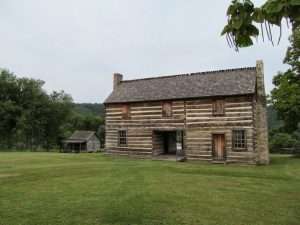
Wolf was granted a ferry license in 1825 to operate across both rivers. He prospered as a trader, and after being elected to the Arkansas Territorial General Assembly in 1826, he secured legislation in 1829 to designate his land in the growing town of Liberty as the site for the county courthouse. If the county government happened to move in the future, the house would still be his. Quite a businessman.
Wolf built the courthouse with a breezeway on the lower level and a large upper courtroom. This lower breezeway is what we call a “Dogtrot,” separating living spaces and capturing the natural breeze and airflow for the hot and humid months.
The courthouse became a bustling hub where settlers camped, socialized, and enjoyed games during court sessions. John P. Houston, brother of Sam Houston, served as county clerk, while the site also functioned as a river port and trade center. It was noted in 1830 by C. F. M. Noland for its commanding position and amenities like a tavern, store, and blacksmith shop.
Contrary to popular belief, Jacob Wolf was not an Indian agent. His role was not associated with the U.S. Government Fur Trade Factory System, which was initiated by George Washington and operated from 1796 to 1822. This system, under the authority of the War Department, involved agents responsible for resolving disputes, enforcing government policies and treaties, distributing annuities, and overseeing reservation life. Jacob Wolf's name does not appear in any official documents related to these duties, confirming that he was not part of this system.
In 1850, Wolf is listed as owning 15 enslaved people, with 10 individuals listed as Black and 5 as Mixed race, ranging in age from 6 months to 45 years old. In 1860, he is listed with 24 enslaved individuals, with 13 listed as Black and 11 as Mixed race, ranging in age from 2 ½ months to 55 years old.
Wolf was also a deacon in his local Baptist Church. His brother, the Reverend John Wolf, was a pioneer Baptist minister along the White River. In Arkansas, the Southern Baptist Convention (SBC) was formed in 1845 when Baptists in the Southern states split from their Northern counterparts over the issue of slavery. The split occurred when the national Baptist organizations refused to appoint slaveholders as missionaries. Southern Baptists of the time actively defended the institution of slavery, often using biblical justifications.
During the Civil War, Union forces occupied North Fork. When they attempted to take Wolf’s home for their use, the old man is said to have attacked them with his cane. For this action, he was imprisoned for several months, which contributed to his death on January 1, 1863.
In 1915, in an article published in the Arkansas Gazette, Wolf was recalled as a “large, brawny man with clear blue eyes crowning a strong, brave countenance.” In a photograph made in 1851, the major is surrounded by his most cherished possessions: his anvil, his hammer, his Bible, his small hymn book, and his spectacles.
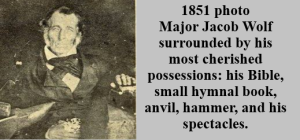
Jacob died on January 1, 1863, at age 77.
Today, the Wolf House is recognized for its historical significance. It was listed on the National Register of Historic Places in 1973 and restored in 2002 with a Courthouse Restoration Grant to reflect its territorial era appearance. It now operates as a museum under the Division of Arkansas Heritage and serves as a certified Trail of Tears Interpretive Center for the Cherokee Benge Route that passed through in 1838–1839. Wolf reportedly repaired wagons for the 1,100 travelers.
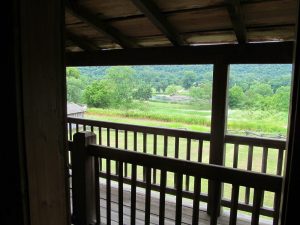
Rice-Upshaw House
Another great example of pioneer life in the Ozarks during this time period is the Rice-Upshaw House & Looney Tavern. In the Eleven Point River valley near Dalton, Arkansas, in northwestern Randolph County, the Rice-Upshaw House, locally known as “Reuben Rice’s,” stands on its original site as a testament to early Arkansas history.
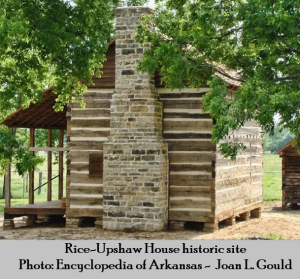
Built in 1828 by merchant and artisan Reuben Rice, the structure served as a store and loom house for his 1820s rural trading center. Mr. Rice arrived in the valley in 1812 with a group of Anglo-American farmers and a few enslaved individuals, establishing a vital community.
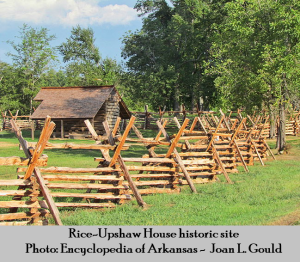
Across the river, about a mile away, William Looney settled and built a log tavern in 1833, which has been restored and still stands today.
While visiting the Rice-Upshaw House, try your hand at Skittles, a lively game from the 18th and 19th centuries where players knock down skittles (wooden pins) with a spinning top. It was popular in British taverns and pubs, and this game carried over into the American Colonies and on into the Western Territories, like the Ozarks. This game often fostered a sense of community through friendly competition and a touch of gambling. Think of Skittles as an early version of a pinball machine.
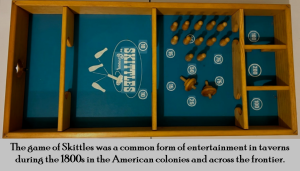
A big thank you to our friends at Rapp’s Barren Brewing Company. Their ongoing support is what helps Retracing Our Roots echo through the hills with the true stories of the Ozarks—tales you won’t find in your average history book. It’s partnerships like theirs that keep our heritage alive and well, one story at a time.
Next time you’re in downtown Mountain Home, stop by Rapp’s and thank Russell Tucker and his incredible team. They’re helping to preserve local history with heart and hometown pride.
Sip. Savor. Sojourn.
𝙍𝙚𝙩𝙧𝙖𝙘𝙞𝙣𝙜 𝙊𝙪𝙧 𝙍𝙤𝙤𝙩𝙨











